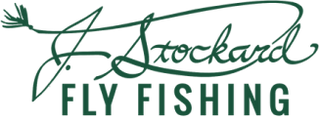Fly of the Month by J. Stockard Pro Tyer: Justin Aldrich, Haversham Co. GA
Put simply, local guide Daniel Massingale wanted a new-ish Yellow Sally pattern to bust some Wild Trout on. Admittedly this pattern isn't the "truest" of the Yellow Sally's out there, but we wanted it that way to give it that certain stand apart advantage. What I wanted was a fun mix between features that were "realistic" (quill body), and characteristics that also said, "Attractor." Here's how to tie it:
Tying the Euro Quill Yellow Sally Fly
- Hook: Partridge SUJ Jig hook
- Bead: Black Nickel Tungsten slotted
- Thread: Semperfli Spyder 18/0 Yellow
- Hotspot: Semperfli Spyder thread, 18/0 Yellow
- Hackle: Hungarian Partridge feather
- Thorax: Hareline Hare's Ear Plus Dub, Rusty Brown
- Abdomen: Quill Body, dyed yellow
- Tail: Mayfly Tail, Amber.
- U.V. Resin: Loon Outdoors Thin.
- Adhesive: Sally Hansons "Hard as Nails."

Euro Quill Yellow Sally Fly Step-by-Step Tying Instructions
- In bigger sizes like #14 and up, start by adding a bit of .010 lead behind the bead.
- Start by attaching the thread behind the bead and building a small thread dam to jam the bead tightly in place. (When no lead is used.)
- Next, measure and catch in the tail fibers slightly in front of the thread dam behind the bead. Secure down the tail with touching turn wraps and keeping the fibers on top of the shank to the bend.
- Catch in the Quill on the near side of the shank towards you just in front of the tail. (Black banding side up on the Quill.)
- Secure the rest of the Quill down along the shank with touching turn wraps. Take your time for a more cosmetically pleasing effect and build a slight "carrot" taper with the thread. At this point, snip off the butt ends of the tail.
- In touching turn wraps, bring the Quill up the shank and capture it down just behind the bead with a couple tight thread wraps and locking turns. Snip butt end off close if there is any.
- Apply a thin layer of your favorite U.V. Resin to the Quill for protection and cure. (A standard thin head cement or varnish can also be applied to the body. Just make sure to let it completely dry before moving on to the next step.)
- Next, dub a very thin/tight Thorax about two millimeters behind the bead. You want to make space for the hackle and hotspot.
- Prepare an appropriate sized Partridge feather. (I like to keep mine sparse for the cosmetic appeal, but from a production on water value I keep it full to allow for loss and breakage of fibers.) Strip off all unnecessary longer fibers and down feathers from the stem.
- Grabbing the feather from the tip, gently fold back the fibers so just the pointed tip is left.(I like to use hackle pliers to aid in this.) Cut off a millimeter or two of that tip.
- Tie in the tip of the Partridge feather just behind the bead, in front of the dubbing ball, so the concave is facing upward.
- Using your preferred method, hackle the Partridge 1-3 times stroking back the fibers with each rotation. Capture down the butt end and snip off close.
- Now finish with a couple whip finishes tight up on the bead creating the hotspot and snip off thread. Add a small amount of Head cement to the whip finished thread.

Additional Tips & Ideas
- Try using a brighter color thread like Fluorescents for the underbody and hotspot.
- Also wrap the Quill in even spaces a bit and letting the thread wraps of the underbody hine through to lighten the color up. (Instead of touching turns.
- Finally, use a strand of flat tinsel for the underbody to add flash to this pattern.

